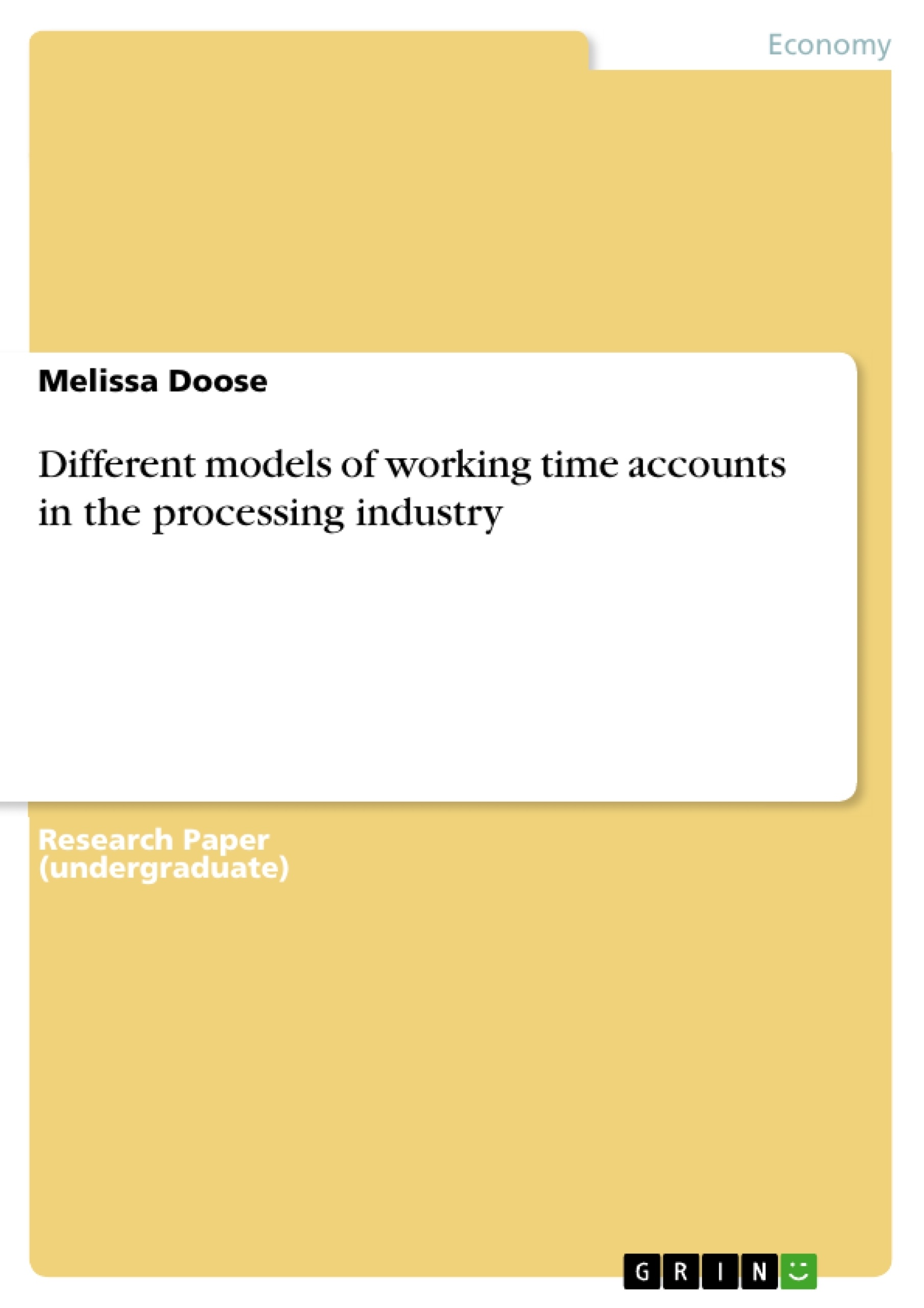In today's dynamic and ever-changing work landscape, the traditional concept of a standard full-time job with fixed hours has evolved. The demand for greater flexibility in working hours has led to the emergence and widespread adoption of various models of working time accounts in the processing industry. This research project delves into the development, types, and regulations surrounding working time accounts, aiming to provide a comprehensive understanding of this transformative aspect of modern employment.
The introduction sets the stage by challenging the conventional understanding of a full-time job spanning five days a week for around 45 years. Instead, it highlights the contemporary need for flexibility in working hours, prompting the implementation of working time accounts. The definition of a working time account is introduced as a contractual agreement between employer and employee, allowing a portion of the employee's remuneration to be accumulated for later use in paid periods of exemption from work. This system is explained as a means of recording and managing the differences between prescribed and actual working hours, resulting in credits or debts on the individual employee's account.
The text emphasizes the importance of considering the desires and needs of employees in the design and organization of working time to ensure successful implementation of new models. This approach not only fosters higher acceptance of changes but also enables a quick response to operational and economic shifts. The flexibility offered by working time accounts extends beyond meeting the needs of both employers and employees; it facilitates adaptability to changing circumstances.
As the research unfolds, readers can anticipate an in-depth examination of various working time account models, the intricacies of time recording, and the legal and contractual frameworks governing these arrangements. The subsequent evaluation of advantages and disadvantages aims to provide a nuanced understanding of the impact and implications of working time accounts in the processing industry. The paper concludes by summarizing key findings and insights, contributing to the ongoing discourse on modern work arrangements.
Inhaltsverzeichnis (Table of Contents)
- 1. INTRODUCTION
- 2. THE DEVELOPMENT OF WORKING TIME ACCOUNTS
- 3. DIFFERENT TYPES OF WORKING TIME ACCOUNTS
- 3.1. SHORT-TERM ACCOUNTS
- FLEXITIME
- ANNUALISED WORKING TIME ACCOUNT
- TRAFFIC LIGHT ACCOUNT
- IMMEDIATELY DECAYING ACCOUNT
- WORKING TIME CORRIDOR
- 3.2. LONG-TERM ACCOUNTS
- LIFELONG WORKING TIME ACCOUNT
- SABBATICAL
- 3.1. SHORT-TERM ACCOUNTS
- 4. TIME RECORDING
- 5. REGULATIONS FOR WORKING TIME ACCOUNTS
- 5.1. WORKING HOURS ACT
- 5.2. COLLECTIVE AGREEMENT
- 5.3. WORKS AGREEMENT
- 5.4. UNIFORM REGULATION AGREED BY WORKING CONTRACT
- 5.5. INDIVIDUAL CONTRACT
- 5.6. FAVOURABILITY PRINCIPLE
- 6. EVALUATION
- 6.1. DISADVANTAGES
- 6.2. ADVANTAGES
- 7. CONCLUSION
Zielsetzung und Themenschwerpunkte (Objectives and Key Themes)
This research project investigates the implementation and utilization of different models of working time accounts in the processing industry. The focus lies on understanding the development of these models, outlining their various types, and analyzing their impact on both employers and employees.
- The evolution of working time accounts and their increasing prevalence in the modern workplace.
- The different types of working time accounts, including their advantages and disadvantages.
- The legal and regulatory frameworks surrounding working time accounts in Germany.
- The impact of working time accounts on employee well-being and work-life balance.
- The potential benefits and challenges of implementing working time accounts in the processing industry.
Zusammenfassung der Kapitel (Chapter Summaries)
- Chapter 1: Introduction This chapter introduces the concept of working time accounts and their significance in the contemporary workplace. It highlights the growing demand for flexible working arrangements and the need for companies to adapt to these changing demands.
- Chapter 2: The Development of Working Time Accounts This chapter examines the historical evolution of working time accounts and their growing popularity in Germany. It traces the implementation of these models by major companies, including Volkswagen AG, and highlights the broader shift towards flexible working arrangements.
- Chapter 3: Different Types of Working Time Accounts This chapter delves into the various types of working time accounts, categorized into short-term and long-term models. It provides detailed descriptions of each model, including Flexitime, Annualised Working Time Account, Traffic Light Account, Immediately Decaying Account, Working Time Corridor, Lifelong Working Time Account, and Sabbatical.
- Chapter 4: Time Recording This chapter examines the practical aspects of time recording within the context of working time accounts, highlighting the importance of accurate data collection and management for both employers and employees.
- Chapter 5: Regulations for Working Time Accounts This chapter explores the legal and regulatory frameworks that govern working time accounts in Germany. It covers relevant legislation, including the Working Hours Act, collective agreements, works agreements, and individual contracts.
- Chapter 6: Evaluation This chapter evaluates the advantages and disadvantages of working time accounts, considering their impact on employee well-being, work-life balance, and company performance.
Schlüsselwörter (Keywords)
This research project focuses on the concept of working time accounts, analyzing their development, types, regulations, and evaluation. Key terms include: flexible working time, work-life balance, time recording, working hours act, collective agreement, works agreement, individual contract, employee well-being, and company performance. The research also investigates the implementation of these models in the processing industry, highlighting their impact on both employers and employees.
- Citar trabajo
- Melissa Doose (Autor), 2016, Different models of working time accounts in the processing industry, Múnich, GRIN Verlag, https://www.grin.com/document/941406



